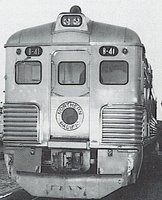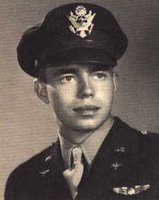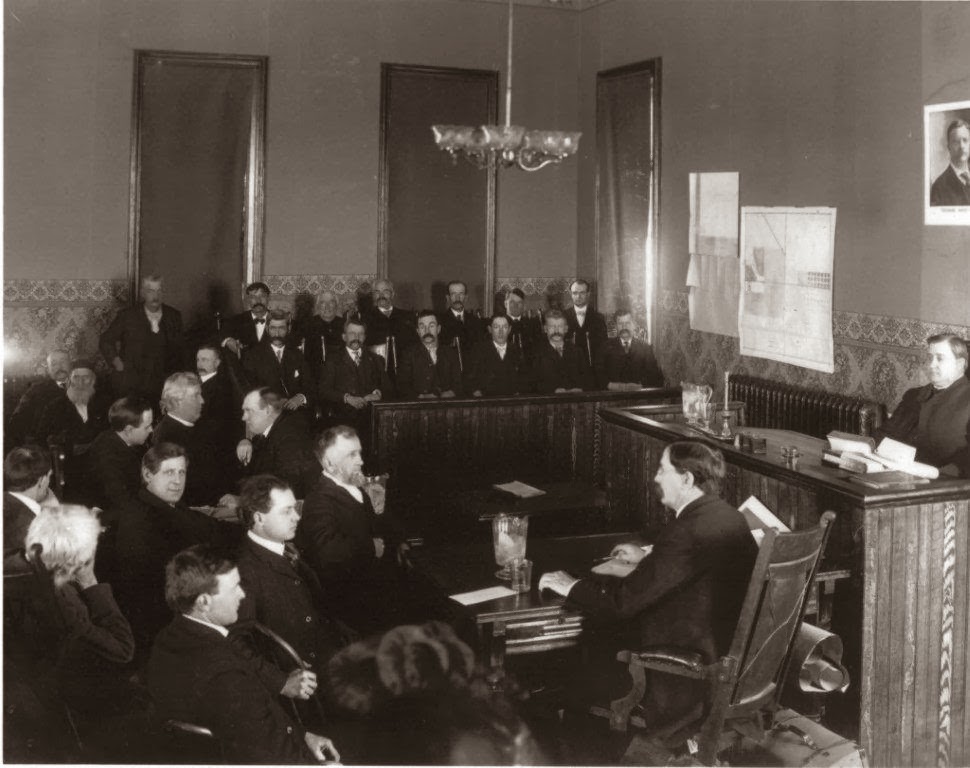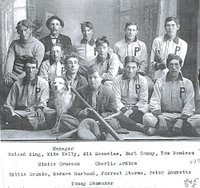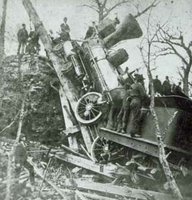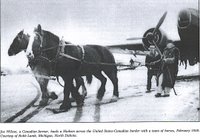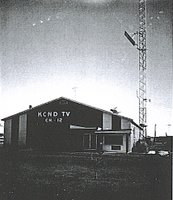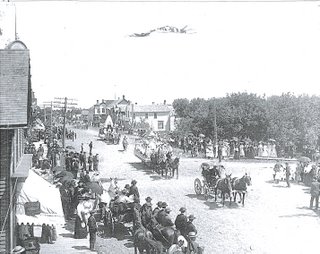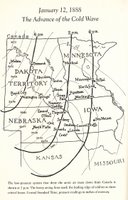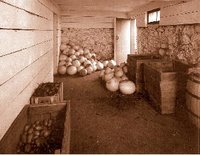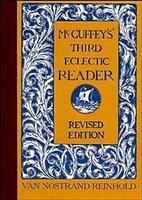 |
| DOC HARRIS: Ready to make a house call... |
FROM: North Dakota History & People, Volume III (1917)
Dr. Charles B. Harris, well known in Pembina and the northeastern part of the state, is there engaged in the practice of medicine. He was born in Charlestown, Jefferson County, West Virginia, on November 6, 1857, and comes of English ancestry, the family having been founded in Maryland at an early period in the colonization of the new world. His father Jeremiah Harris, was born in Virginia and there followed merchandising and farming, cultivating his land with the aid of a large number of slaves whom he owned. His business affairs were carefully and profitably conducted. At the time of the Civil War, he joined the confederate army as a member of
Ashby's Cavalry, with which he served for about six months, when ill health forced him to leave the army. He married Susan Martha Boarman, a native of Virginia, and representative of one of the old families of that state, of English origin. The founder of the family in America came to the new world with Lord Baltimore and first settled in Charles County, Maryland. Her father was Charles Boarman, the admiral of the United States Navy, who fought in the
War of 1812 against England. The death of Jeremiah Harris occurred in 1881, when he was sixty-two years of age, after which Mrs. Harris came with her family of four children to North Dakota. She is still living at the advanced age of eight-six years.
Dr. Harris pursued his education in the schools of Charlestown, West Virginia, and of Baltimore, Maryland, preparing in the latter city for his professional career as a student in the
College of Physicians and Surgeons. He was graduated therefrom March 3, 1880, with the M.D. degree and following his graduation he practiced for eighteen months at Martinsburg, West Virginia. On the 11th of January 1883, he arrived in Pembina and is today the oldest physician in years of continuous practice in Pembina county. His position professionally has ever been among the foremost and his comprehensive knowledge of the science of medicine well qualified him for the onerous duties which devolve upon him. He is a member of the Grand Forks District Medical Society and the North Dakota State Medical Society, and broad reading and study keep him informed concerning the truths brought to light by modern scientific research and investigation. Since 1911 he has been president of the
Merchants Bank of Pembina. He also owns and cultivates a large amount of farm land in Pembina County and his agricultural interests contribute materially to his income.
On the 29th of September 1886, in Pembina, Dr. Harris was united in marriage to Miss Katherine J. Abrams, a native of Canada and a daughter of Mr. and Mrs. George W. Abrams, who resided near Kingston, Canada, but both have now passed away. Dr. and Mrs. Harris have six children - Gladys, Kathryn J., Pauline, Janette, George, and Mary Margaret.
Dr. Harris belongs to the
Ancient Order of United Workmen, the
Yeomen and the
Degree of Honor. He is also a
Mason. Politically he is a Democrat and for many years was superintendent of health in Pembina County and for thirty years was one of the commissioners on the board of this county for the examination of cases of insanity. He has also served for twelve years on the local school board but at the present time is filling only the position of health officer of his city. He has always been loyal to every trust reposed in him and has proven a competent, faithful official, discharging every public and professional duty with a sense of conscientious obligation.
_______________________________
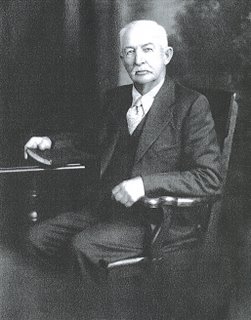 FROM: BIOGRAPHY of Dr. C. B. Harris
FROM: BIOGRAPHY of Dr. C. B. Harris
Charles B. Harris was born in Charlestown, West Virginia, Jefferson County, on November 6, 1857, and is of English decent.
His father, Jeremiah Harris, was born in Virginia in 1819 being a merchant and farmer, his help was a large number of slaves that he owned. At the time of the Civil War he joined the Confederate army as a member of Ashby's Cavalry. He served six months when ill health forced him to leave the army. He married Susan Boarman a native of Virginia. Her people were of English origin. Her father was Charles Boarman, an Admiral of the U.S. Navy who fought in the War of 1812 against England. Jeremiah Harris died in 1881. Mrs. Harris and two children came to North Dakota in 1884. Mrs. Harris died on April 25, 1921 at her home in Pembina.
C. B. Harris received his education in the school of Charlestown, West Virginia and of Baltimore Maryland, preparing in the latter school for the practice of Medicine as a physician and surgeon. He graduated March 3, 1880 with an M.D. degree and following his graduation he practiced for eighteen months at Martinsburg, West Virginia. January 11, 1883 he arrived at Pembina to continue his profession, now being the oldest physician in years of continuous practice in Pembina County.
September 29, 1886, he married Miss Katherine Abrams, a native of Canada and the daughter of Mr. and Mrs. George Abrams, who lived near Kingston, Canada. Dr. Charles B. Harris and Mrs. Harris still live in Pembina. Mrs. Harris is in poor health. Dr. Harris is still at his profession at the age of 80 years. He also has several farms in Pembina County which he oversees. Mr. and Mrs. C. B. Harris celebrated their 50th wedding anniversary on September 5, 1936.
________________________________
FROM: Historical Data Project (Liberty Memorial Building, Bismarck, ND)
Arrived in Pembina on January 11, 1883 after a 4-day journey; came alone with only clothes and medical instruments. Built own home out of lumber, and lived a simple life with a coalstove and hurricane lamps he had shipped in to the local general store. Water came from wells, not the river.
Offices held:
Pembina Health Officer 1888-1937
Pembina School Board President 1895-1920
Pembina Bank President 1911-1927
Never in the army or navy. Took school in W VA and Baltimore. Didn't care to comment on church activities.
Married 9/29/1886 in Pembina
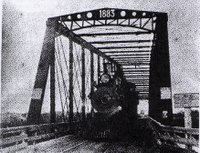 Although my parents were Americans, and lived in St. Vincent, Minnesota, I was born in Emerson, Manitoba. It was 1959, and at that time, Emerson was the closest medical facility; it also wasn't as unusual then, as it would be now, for people to go back and forth as a matter-of-fact daily act for shopping and other services. We were waved - yes, waved - through the borders, Canadian and American sides. People knew the locals that well.
Although my parents were Americans, and lived in St. Vincent, Minnesota, I was born in Emerson, Manitoba. It was 1959, and at that time, Emerson was the closest medical facility; it also wasn't as unusual then, as it would be now, for people to go back and forth as a matter-of-fact daily act for shopping and other services. We were waved - yes, waved - through the borders, Canadian and American sides. People knew the locals that well.